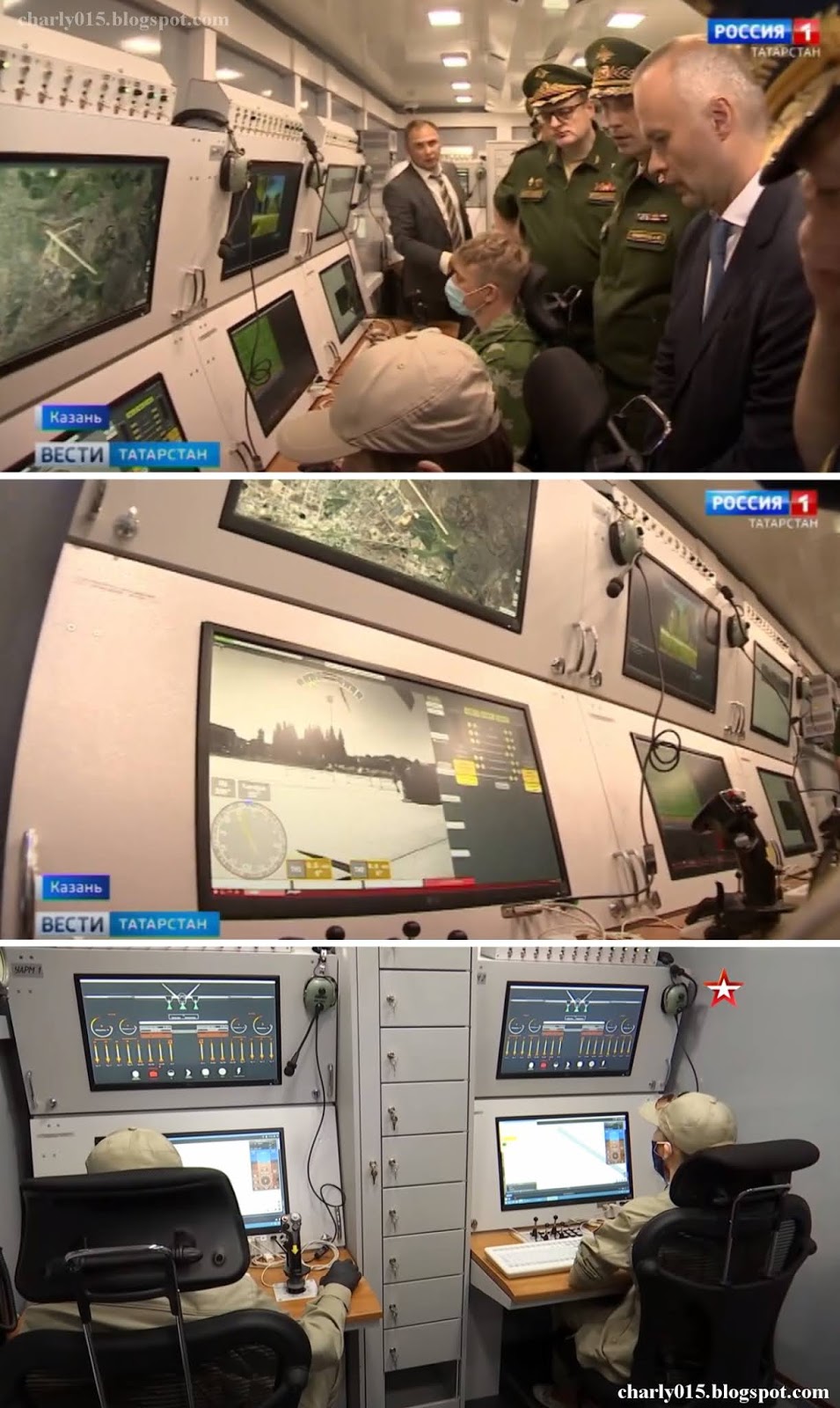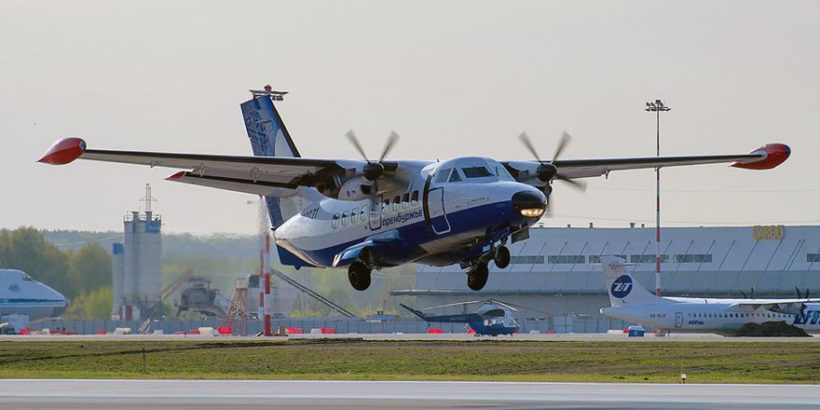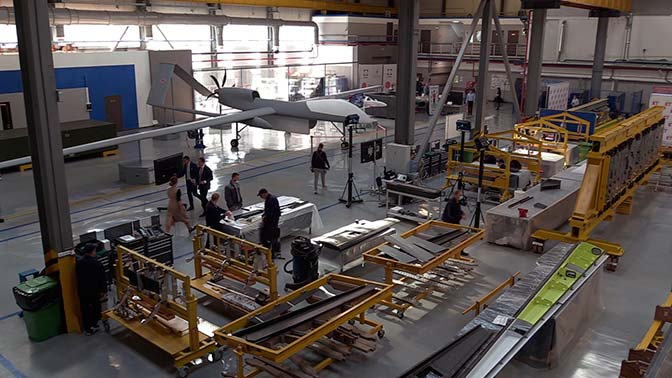"Altius" is a heavy Russian long-range UAV with a maximum combat load of more than a ton. The UAV made its first flight in August 2019. In February 2020, the official website of the Russian defense Ministry reported that the final version of the drone was named "Altius-U". The deployment of production of a heavy reconnaissance and attack drone is planned to be carried out at the facilities of the Ural plant of civil aviation , which is currently engaged in development work on this topic.
Soon, the Russian aerospace forces will have a new heavy reconnaissance and attack UAV "Altius", which will receive elements of artificial intelligence (AI). the UAV will be able to operate autonomously without the participation of an operator, as well as independently interact with the promising Russian fifth-generation fighter su-57.
It is reported that the new reconnaissance and attack drone will be able to independently plot a route to a target or a given patrol area without the help of a human operator, bypassing the air defense zones of a possible enemy, as well as detect and attack important ground targets: missile launchers, communication nodes, headquarters. A device with such capabilities is not yet available to the Russian aerospace forces.
As reported by the newspaper "Izvestia» with reference to its own sources in the military-industrial complex, the country has already begun work on creating an updated version of the heavy reconnaissance and strike drone "Altius-U". The new UAV will receive elements of the AI system, and it will be possible to remotely control the device from the su-57 fighter. It is reported that all the necessary equipment that will give the UAV its "brains" will be installed on the device until the end of 2020, after which the period of technical testing of the new product will begin.
It is assumed that the elements of artificial intelligence will give the device new capabilities, including the ability to attack ground targets independently. Having obtained the coordinates of the target, the UAV will be able to use its onboard computer to create an algorithm for finding the optimal route to the target of attack, as well as calculate the most suitable point for dropping bombs.
All this the drone will be able to do without the help of an operator, while the combat drone will receive all the information from the headquarters about the air situation and the location of enemy air defense facilities in real time and build its flight, processing the incoming data. After completing the combat task, the heavy UAV will be able to return to the base in automatic mode along the safest route or return to the patrol zone and continue to solve reconnaissance tasks.
It is worth noting that currently military drones at all stages of flight try to control operators working from the ground. AI elements installed on Altius should help reduce the burden on operators of unmanned complexes, which is especially important for long flights and long patrols. For a large reconnaissance and strike vehicle, this is especially relevant, since such a UAV is able to stay in the sky for more than a day.
At the same time, today, not all the technical data of the UAV is still known. For example, in February 2018, the official website of the Ministry of defense of the Russian Federation reported that the heavy UAV "Altius" will be able to carry up to two tons of combat load. But today in the press, including on the thematic site of the Ministry of defense "Zvezda", you can increasingly find other data about the payload of the device – up to 1000 kg.
The new Russian unmanned aerial vehicle Altius is built according to a classic aerodynamic scheme with a high-placed wing of large span and a V-shaped tail. It is known that "Altius" is built with a wide use of composite structural materials. The power plant of the device is represented by two turboprop engines located on the wing cantilevers, the engines drive two pull screws. Apparently, we are talking about VK-800S engines developed in the Klimov design Bureau. This engine is designed for installation on light aircraft and helicopters (version VK-800V) and produces a take-off power of 800 HP. The approximate wingspan of the UAV is up to 30 meters, the length is about 12 meters, and the take – off weight is more than six tons.
In 2019, the UZGA plant presented a modified version of the unmanned vehicle, which received a satellite communication system. With the use of such a system, the flight range OF the UAV "Altius" is limited only by the amount of fuel on Board. According to experts, the appearance of such a system allows a reconnaissance and strike drone to conduct reconnaissance and attack targets at a distance of hundreds or thousands of kilometers from its base. It is known that in the sky "Altius" can be from 24 to 48 hours, and the maximum range of its flight should be 10,000 kilometers. At the same time, the device will be able to conduct reconnaissance from a height of 12 thousand meters.
The features of the device also include its equipment with an inertial navigation system SP-2, which should reduce the possibility of detecting the device in the air, providing the UAV with additional resistance to induced interference and work in the conditions of electronic countermeasures from the enemy.
It is assumed that the UAV will be able to carry gliding bombs "Grom-2" with a total weight of 598 kg (mass of the warhead 480 kg) and a launch range of 10-50 km, or guided missiles "Grom-1" with a starting mass of 594 kg (mass of the warhead 315 kg) with a launch range of up to 120 km. This assumption was put forward by the journalists of Izvestiya.
It is planned that "Altius-U" will enter service not only with the VKS, but also with the Russian Navy.
https://topwar.ru/169438-altius-tjazhelyj-rossijskij-bespilotnik-s-iskusstvennym-intellektom.html
As can be seen in the previous pics, the Satellite Navigation equipment has been installed and they're testing it with new bombs
.













